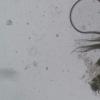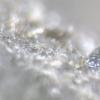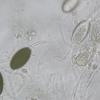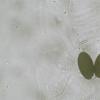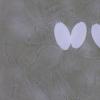
19-11-2025 23:21
 carl van den broeck
carl van den broeck
Dear guestIn Waardamme, Belgium, I found dozens of

19-11-2025 20:51
 Andreas Millinger
Andreas Millinger
Good evening,found this species on a felled trunk

19-11-2025 13:04
 Bruno Coué
Bruno Coué
Bonjour,je sollicite votre avis pour la récote

17-11-2025 21:46
Philippe PELLICIERBonjour,Récolté sur bois pourrissant de feuillu

16-11-2025 21:09
 Robin Isaksson
Robin Isaksson
Anyone recognize this acc. to pictures.? Found on

18-11-2025 13:59
Nogueira HéctorNovember 14, 2025 Brazuelo (León) SPAIN Hymenosc

17-11-2025 19:14
herman lambertApothécie discoïde 0.6 cm diam., orangeFace hym�

17-11-2025 21:57
Philippe PELLICIERBonjour,Récolté sur bois de feuillu mort dur, no

14-11-2025 16:26
 Marian Jagers
Marian Jagers
Hello everyone, On dead wood of Cytisus scoparius
Podospora anserina/pauciseta
Joop van der Lee,
30-12-2020 11:38
 Found on cow dung.
Found on cow dung.Yesterday I managed to make some photos of P. anserina especially from the pedicel and connected caudae. This is very rare because the pedicel mostly collaps and the caudae easily disconnect from their connection point or they break and will therefore not be (completely)visible.
Mirze & Cain did not mention the measurements of the caudae but they happen to be much longer than those of P. pauceiseta as described by Lundqvist.
Based on the circular shaped connection of the lateral cauda on the pedicel and the view of the other caudae I assume that all caudae are cylindrical.
The pedicel is also much longer than the ones from P. pauciseta.
Measured data:
Pedicel: 24.6-27.2x 5.0-6.0 um (P. pauciseta 16-18x3.5-5 um)
Upper cauda: 115-159x3.8-4.2 um (P. pauciseta 65-90x8-8.5x6.7 um)
Secondary cauda at the end of the pedicel 43.0x2.0 (P. pauciseta 75x3-5 um)
Two lateral caudae connected to the pedicel 48x3.3 um (P. pauciseta 3-4 caudae 25x2-3 um)
All caudae do end in some sort of a tail.
Spores: 35-36.7x19-19.5 um (P. pauciseta 35-40x18-19 um)
The neck of the perithecium is completely covered with whall thickenings and tuffs of septated hyaline hairs but sometimes only with some single hairs or no hairs at all.
I also did find an interesting article (released the 25th of november 2020) about the namechange for P. anserina in Triangularia anserina that can be found on mycokeys. pensoft.net/article/55968/, I can also provide it as a full PDF file.
Greetings,
Joop

